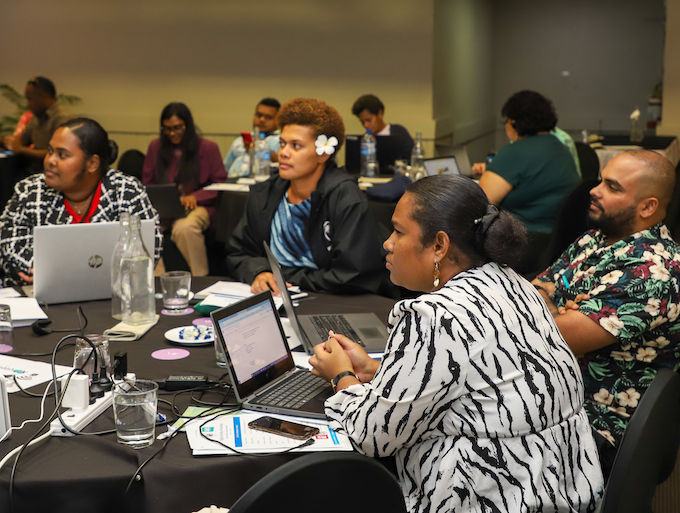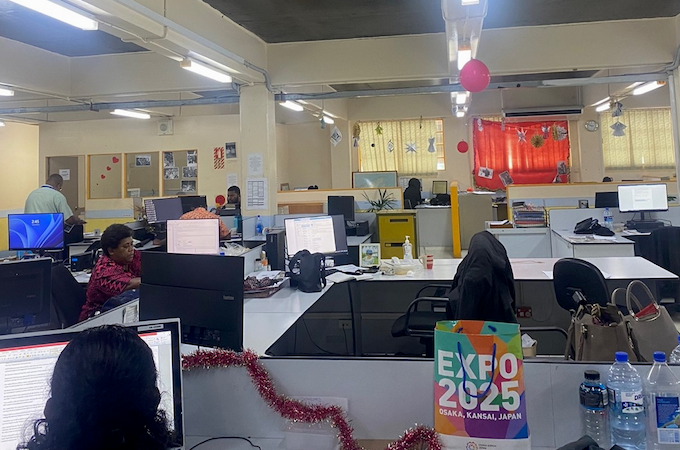
By Catrin Gardiner, Queensland University of Technology
In the middle of the Pacific, Fiji journalists are transforming their practice, as newsrooms around Suva are requiring journalists to become multimedia creators, shaping stories for the digital age.
A wave of multimedia journalists is surfacing in Fijian journalism culture, fostered during university education, and transitioning seamlessly into the professional field for junior journalists.
University of the South Pacific’s technical editor and digital communication officer Eliki Drugunalevu believes that multimedia journalism is on the rise for two reasons.
“The first is the fact that your phone is pretty much your newsroom on the go.”
With the right guidance and training in using mobile phone apps, “you can pretty much film your story from anywhere”, he says.
The second reason is that reliance on social media platforms gives “rise to mobile journalism and becoming a multimedia journalist”.
Drugunalevu says changes to university journalism curriculum are not “evolving fast enough” with the industry.
Need for ‘parallel learning’
“There needs to be parallel learning between what the industry is going through and what the students are being taught.”
Mobile journalism is growing increasingly around the world. In Fiji this is particularly evident, with large newsrooms entertaining the concept of a single reporter taking on multiple roles.
Fijian Media Association’s vice-president and Fiji Times editor-in-chief Fred Wesley says one example of the changing landscape is that the Times is now providing all its journalists with mobile phones.
“While there is still a photography department, things are slowly moving towards multimedia journalists.”
Wesley says when no photographers are available to cover a story with a reporter, the journalists create their own images with their mobile phones.

The Fiji Broadcasting Corporation (FBC) also encourages journalists to take part in all types of media including, online, radio, and television, even advertising for multimedia journalists. This highlights the global shift of replacing two-person teams in newsrooms.
Nevertheless, the transition to multimedia journalists is not as positive as commonly thought. Complaints against multimedia journalism come from journalists who receive additional tasks, leading to an increase in workload.

Preference for print
A former newspaper journalist turned multimedia journalist at FBC, Litia Cava, says planning a day was easier when she was working only with print news.
While Cava’s typical day as a newspaper reporter would involve researching and seeking interviewees and then writing and compiling her news stories, as a multimedia journalist including broadcast, she faced much tighter deadlines.
Executives at major Fijian news companies, such as Fiji TV’s director of news, current affairs and sports, Felix Chaudhary, also complain about the lack of equipment in their newsrooms to support this wave of multimedia journalism.
“The biggest challenge is the lack of equipment and training,” Chaudhary says.
Fiji TV is doing everything it can to catch up to world standards and provide journalists with the best equipment and training to prepare them for the transition from traditional to multimedia journalism.
“We receive a lot of assistance from PACMAS and Internews,” Chaudhary says. “However, we are constantly looking for more training opportunities. The world is already moving towards that, and we just have to follow suit or get left behind.”
More confidence
Fortunately for young Fijian journalists, Islands Business managing editor Samantha Magick says a lot of younger journalists are more confident to go out and produce and write their own stories.
“It’s the education now,” she says. “All the journalists coming through are multimedia, so not as challenging for them.”
University of South Pacific student journalist Brittany Louise says the practical learning of all the different media in her journalism course will be beneficial for her future.
“I think that’s a major plus,” she says. “You already have some sort of skills so it helps you with whatever different equipment it may be.”
Catrin Gardiner was a student journalist from the Queensland University of Technology who travelled to Fiji with the support of the Australian government’s New Colombo Plan Mobility Programme. This article is published in a partnership of QUT with Asia Pacific Report, Asia Pacific Media Network (APMN) and The University of the South Pacific.











































